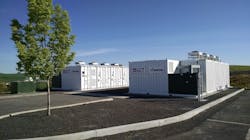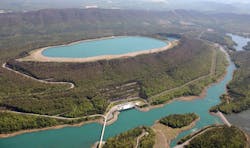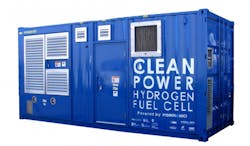The electric power grid is facing a number of challenges from the technological change across the power system and increasing severity and frequency of natural and man-made threats. As the generation mix rapidly evolves throughout the country, technologies that provide additional operational support to the grid will become more valuable. Part of that process will require the industry and the government to build and validate business cases based on a firm regulatory framework that meet requirements such as flexibility, reliability, resilience, sustainability, and grid stability. This effort requires a holistic approach to identify technical and regulatory solutions that is coordinated with the industry and the government. One technology that is crucial to the next evolution of the nation's electrical grid is advanced energy storage.
But what is energy storage really? For many people, the term "energy storage" is likely to invoke a vision of an electrical battery — and it makes sense since the majority of the utility energy storage systems deployed on the grid in recent years are batteries. However, the technology with the largest installed capacity on the grid in the United States is pumped hydro. What about other types of storage such as thermal or chemical? These technologies store energy as well. In fact, a pile of coal at a power plant or a pipeline with natural gas is energy storage. Also, technologies that do not store energy themselves but provide similar functions may work best in some scenarios. To fully assess how to support the development of energy storage, we need to evaluate all of the diverse technologies that provide the benefits of energy storage from the perspective of the functions and values that a system can provide to the grid.
One of the essential benefits of energy storage is the flexibility it adds to the power system. The electric grid is a very complicated machine and electricity is a very unique product that requires just-in-time delivery. Electricity supply must match demand at any given moment of time. In the past, that was accomplished by forecasting loads and scheduling and dispatching generation to meet demand. Today, with increasing penetration of variable renewable generation, you need forecasts for both demand and generation. While our forecasting abilities are improving, this does not overcome the issue that traditional wind and solar generation are not dispatchable resources. When you cannot fully control both sides of the system, you need additional flexibility and that is where energy storage comes in.
The best type of flexibility for the grid is when a storage system can act as both generation and load. Bidirectional electrical storage systems such as batteries really shine in this area. However, storage technologies are best evaluated from a functional perspective. For example, you can deliver similar functions of storage if you increase the flexibility of the load or the responsiveness of generation. Even though these are not traditional energy storage systems, they still can be considered as such from a functional perspective. Additionally, thermal and chemical storage can also deliver similar functionality, even when they act only as producers or consumers of electricity. Of course, not all these systems are created equal. Some may provide more values than others, but from a grid flexibility perspective, they all enable several similar functions and you can select the best suited technology based on your use and business case. To help address this diverse portfolio of technologies, you can organize energy storage systems into three general functional categories:
- The first category is bidirectional electrical energy storage systems. It includes technologies that are capable of absorbing electric energy, storing that energy, and dispatching the stored energy in the form of electricity (Fig. 1). These systems can use mechanical, electrical, chemical, electrochemical, thermal, or other processes to store energy. The examples include batteries, capacitors, flywheels, pumped hydro, and so forth. What all these systems have in common is that they have both electric input and electric output and can act as generation and load on the grid (Fig. 1).
- The second category, flexible generation and controllable loads, includes technologies capable of enhancing the flexibility of generation and loads. These technologies can shift the demand for electricity in time or enhance ability to control generation output and/or can provide additional services to the grid. These systems can have electric, thermal, or other inputs and electric, thermal, or other outputs but either input or output must be electric. The examples include commercial building demand response, rooftop photovoltaics with controllable smart invertors, and other hardware and software solutions that enable shifting energy demand to better match generation or enhancing the ability of energy resources to provide grid services.
The DOE will deploy its extensive resources and expertise to address the technology development, commercialization, manufacturing, valuation, and workforce challenges to position the United States for global leadership in the energy storage technologies of the future. While research and development is the foundation of advancing energy storage technologies, global leadership also requires addressing associated challenges to scale technologies from the lab to the marketplace and manufacture them in the United States. That is why the challenge is not ours alone. It requires the full force of American ingenuity pulling together toward shaping the grid of the future that will provide better access, quality, and security around the world.
About the Author
Michael Pesin
Michael Pesin is deputy assistant secretary for the advanced grid research and development division at the U.S. Department of Energy's Office of Electricity. Pesin has more than 30 years of experience in the electric utility industry, directing development and execution of advanced technology programs. He was also the founder and principal of a consulting company working with utilities, technology companies, and investors. He was a board member at several technology organizations, is actively involved with a number of electric power industry groups, and is a frequent speaker at industry events.



